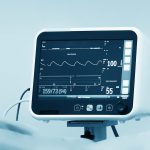Effective Medical Device clinical trial monitoring is essential for ensuring the validity, reliability, and integrity of data collected during medical device trials, ultimately supporting regulatory submissions and decision-making regarding the device’s safety and efficacy. Medical device clinical trials require collaboration among researchers, clinicians, regulatory agencies, and industry partners to ensure that devices are rigorously evaluated and provide benefit to patients while minimizing risks.
Monitoring clinical trials for medical devices requires adherence to good practices to ensure data integrity, participant safety, and regulatory compliance. Here are some key good practices for medical device clinical trial monitoring:
1. Preparation and Planning for Clinical Trial Monitoring:
- Develop a comprehensive Medical Device monitoring plan outlining monitoring activities, monitoring frequency, methods, timelines, and responsibilities
- Ensure adequate training of monitors on the Medical Device protocol, device specifications, regulatory requirements, and monitoring procedures. Review the study protocol, Investigator’s Brochure, and relevant regulatory requirements. Identify key study endpoints, risks, and critical data elements
1.1 Site Monitoring Visits:
- Conduct regular monitoring visits to investigational sites to assess compliance with the protocol, regulatory requirements, and Good Clinical Practice (GCP) guidelines
- Provide support and guidance to site staff, address any issues or concerns, and ensure timely resolution of queries or discrepancies
1.1.1 Site Selection:
- Select investigational sites based on their capability, experience, and patient population
- Ensure sites have appropriate facilities, equipment, and personnel for conducting the trial
- Obtain necessary regulatory approvals and site agreements
1.1.2 Training:
- Provide training to investigators and site staff on protocol requirements, device handling, and Good Clinical Practice (GCP) guidelines
- Ensure understanding of data collection procedures, adverse event reporting, and regulatory obligations
1.1.2 Initiation Visit:
- Conduct an initiation visit to each site to review the medical device protocol, study procedures, and responsibilities
- Verify site readiness, including availability of study materials and trained personnel
- Establish communication channels and document any site-specific requirements
1.1.3 Ongoing Monitoring:
- Perform regular monitoring visits according to the monitoring plan
- Review informed consent forms, regulatory documents, and trial master file for completeness and accuracy
- Verify participant eligibility, enrollment, and adherence to inclusion/exclusion criteria
- Monitor device accountability, handling, and storage procedures
- Assess participant safety by reviewing adverse events, protocol deviations, and serious adverse events (SAEs)
- Verify data accuracy and integrity through source data verification (SDV) and review of case report forms (CRFs) and electronic data capture (EDC) systems
- Address any issues or deviations promptly and document corrective actions
1.1.4 Close-Out Visit:
- Conduct a close-out visit at the end of the trial to review data completeness, regulatory documentation, and site close-out procedures
- Collect any remaining study documents and return unused investigational materials
- Ensure proper archiving of trial documentation according to regulatory requirements
2. Protocol Compliance:
- Verify that the trial is conducted in accordance with the approved study protocol, including enrollment criteria, device usage, and data collection procedures
- Ensure that any protocol deviations or amendments are appropriately documented, reported, and approved by regulatory authorities
3. Participant Safety Monitoring:
- Monitor adverse events, serious adverse events (SAEs), and device-related complications to ensure participant safety
- Ensure timely reporting of safety events to the sponsor, Institutional Review Board (IRB), and regulatory authorities as required
4. Data Integrity:
- Perform source data verification (SDV) to confirm the accuracy and completeness of data recorded in case report forms (CRFs) against original source documents
- Implement data management processes to ensure data are collected, entered, and analyzed accurately and securely
5. Device Accountability and Handling:
- Monitor the accountability, storage, handling, and usage of investigational devices to ensure compliance with the protocol and regulatory requirements
- Verify that devices are administered or used by trained personnel according to the manufacturer’s instructions and study protocol
6. Regulatory Compliance:
- Ensure compliance with regulatory requirements set forth by regulatory authorities such as the FDA (Food and Drug Administration) in the US or the EMA (European Medicines Agency) in Europe
7. Documentation and Reporting:
- Maintain accurate and complete documentation of monitoring activities, findings, and communications with investigators and site personnel
- Prepare monitoring reports detailing observations, deviations, and corrective actions taken during monitoring visits
- Communicate with investigators and site staff regarding monitoring findings and corrective actions
- Ensure that all trial documentation, including CRFs, source documents, and regulatory submissions, is properly archived and accessible for audits and inspections
8. Communication and Collaboration:
- Foster open communication and collaboration among monitors, investigators, sponsors, regulatory authorities, and other stakeholders involved in the clinical trial
- Address any concerns, questions, or challenges promptly and transparently to facilitate the smooth conduct of the trial
9. Continuous Improvement:
- Regularly evaluate and review monitoring processes and outcomes to identify areas for improvement and implement corrective actions as needed
- Stay updated on regulatory requirements, industry standards, and best practices to ensure the effectiveness and efficiency of monitoring activities
10. Risk-Based Monitoring (RBM):
- Implement risk-based monitoring strategies to prioritize monitoring activities based on potential risks to data integrity and participant safety
- Focus monitoring efforts on critical data elements, high-risk study activities, and investigational sites with a history of compliance issues
Conclusion
By following these medical device trial monitoring good practices, clinical trial monitors can help ensure the quality, reliability, and ethical conduct of medical device clinical trials, ultimately contributing to the development of safe and effective medical devices for patients.
For further information on best practices for clinical monitoring of medical devices, please contact our team of regulatory experts.



